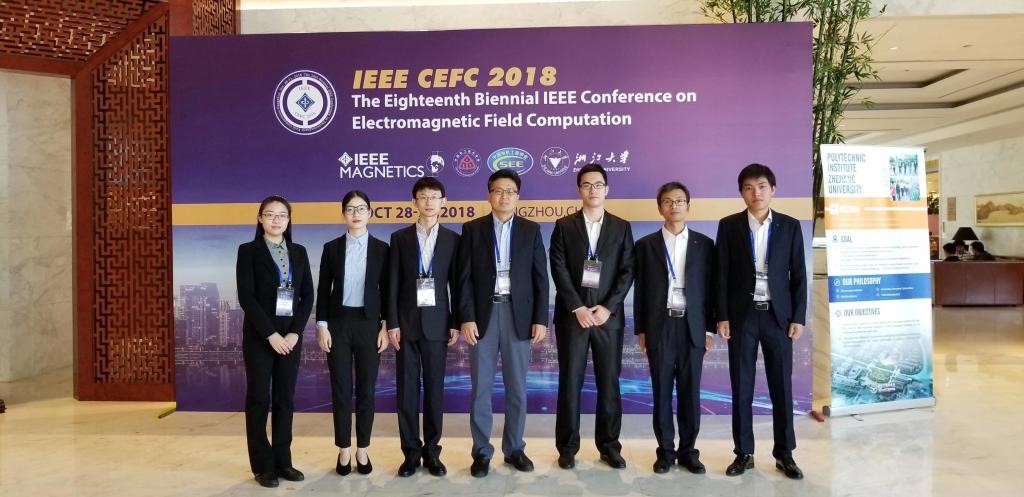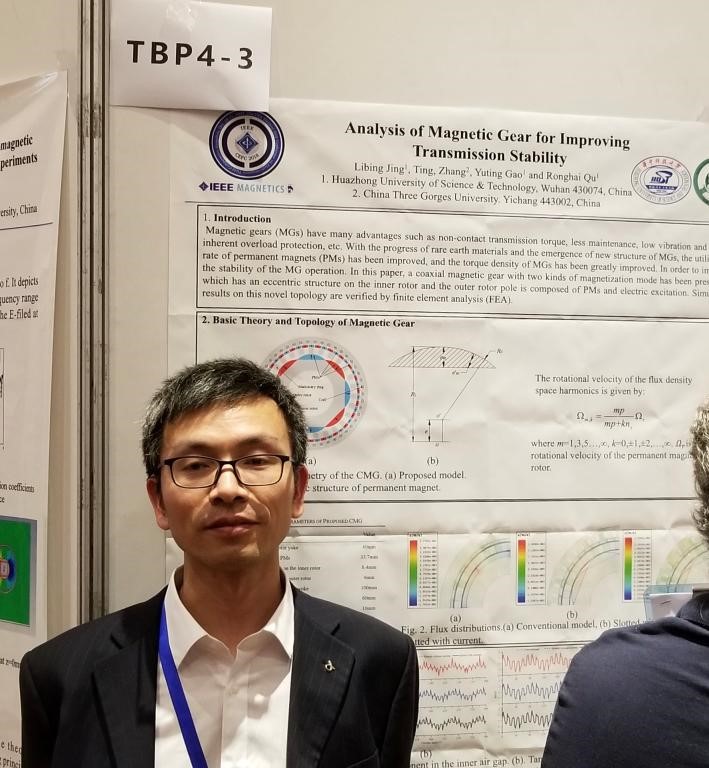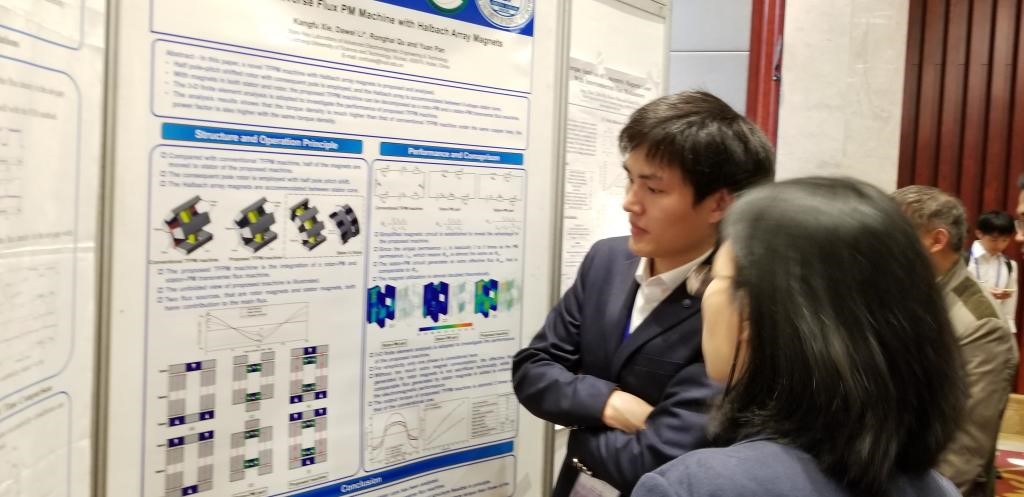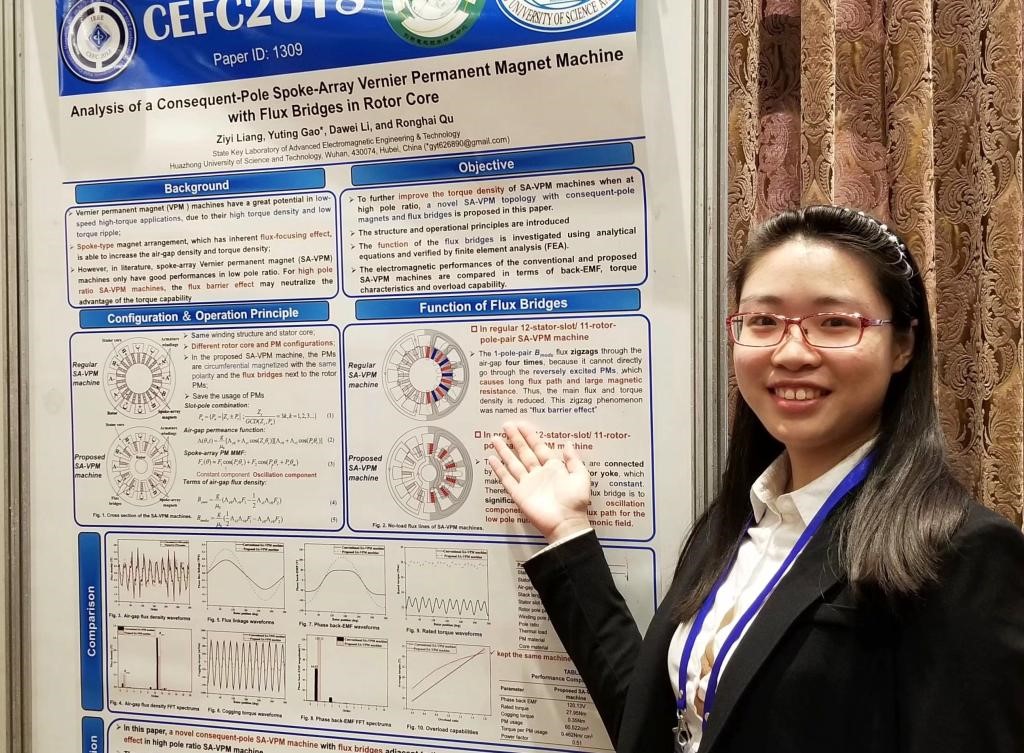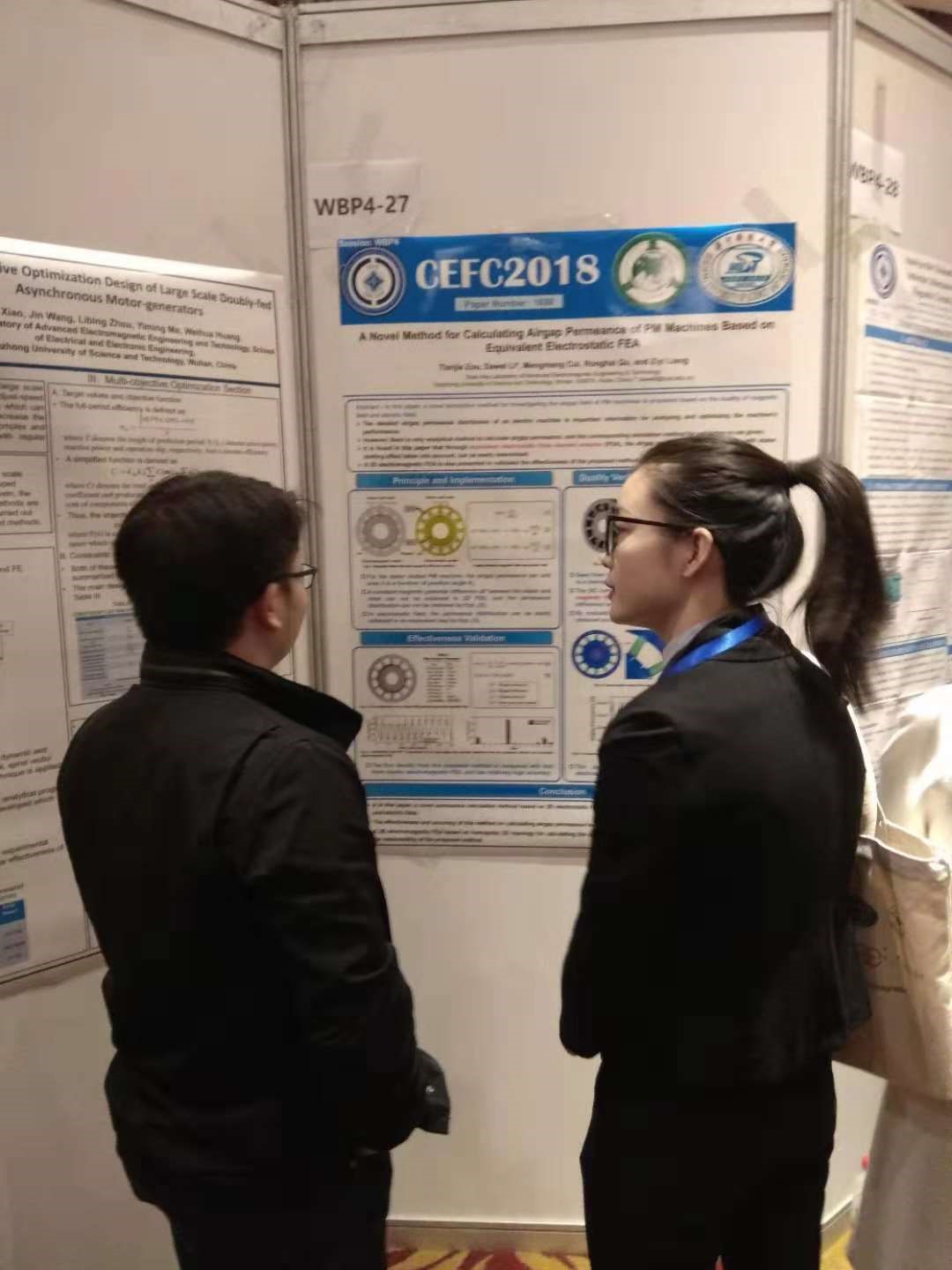The 18th IEEE Conference on Electromagnetic Field Computation (CEFC2018) was held from October 28 to 31, 2018 at hotel Wanghu, Hangzhou. This conference is jointly sponsored by IEEE magnetics society, China electrotechnical society, Chinese society for electrical engineering, and undertaken by Zhejiang university. CEFC is one of the largest and most advanced international academic conferences in the field of electromagnetic field computing. Professor Qu ronghai, postdoctoral fellow Jing libing, PhD students Xie Kangfu, Lin Mengxuan, Shi chaojie, Cui Mengmeng and Liang Ziyi attended the meeting.
The conference received a total of 930 papers from more than 30 countries, including 11 special reports and 29 poster reports. In this conference, CAEMD published 11 academic papers, which were displayed in the sub-conference. During the conference teachers and students had in-depth exchanges and discussions with scholars from other countries and regions on motor design and topology, and were highly appraised by scholars from home and abroad. Furthermore, Professor Qu Ronghai served as the chairman of the theme venue of Devices and Applications.
During the meeting, the teachers and students of CAEMD not only greatly promoted their own research through in-depth exchanges with peers at home and abroad, but also further improved the academic influence of the school and the center by their outstanding quality, which is of great significance to the development of the school and the center.
The CEFC conference is a biennial science and technology event that showcases the latest research on the modeling and simulation of electromagnetic field waveforms and their interactions. During the conference, experts and scholars from all over the world will bring their latest scientific research achievements in static and quasi-static fields, electromagnetic wave propagation, coupling problems, numerical techniques, optimization and design, software methods, nanomagnetic fields, nanophotonics, biological computing, equipment and applications.
